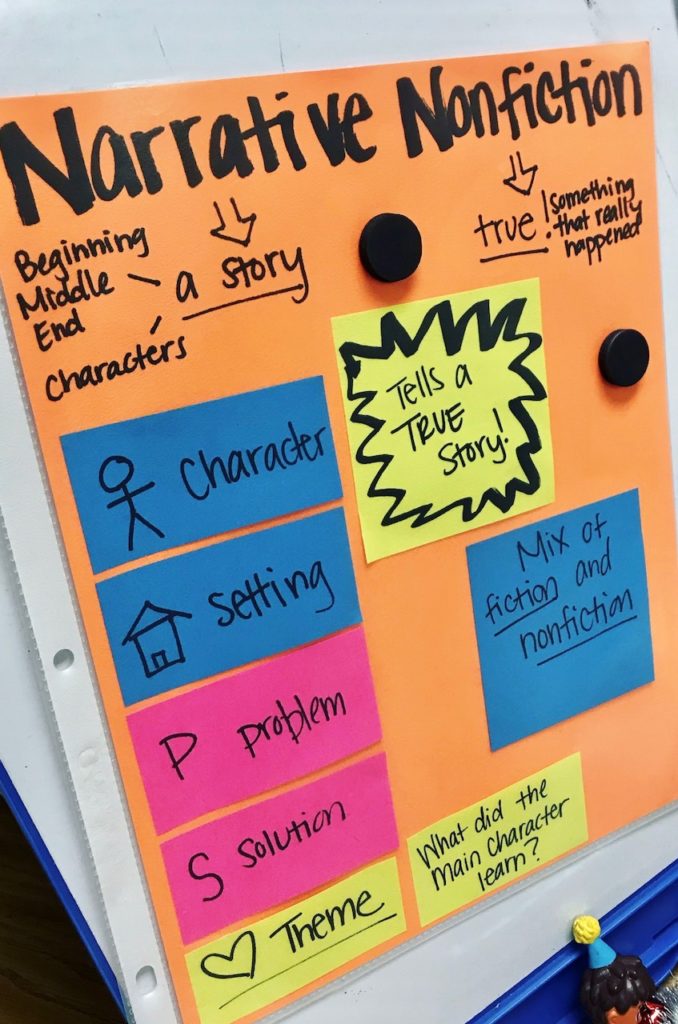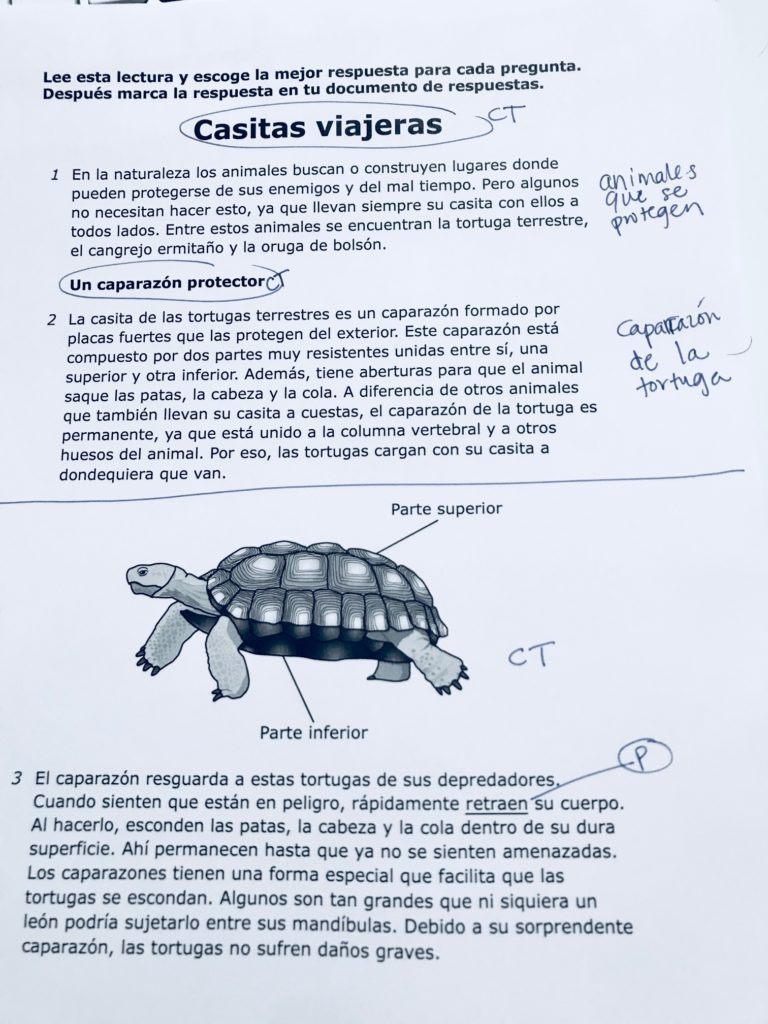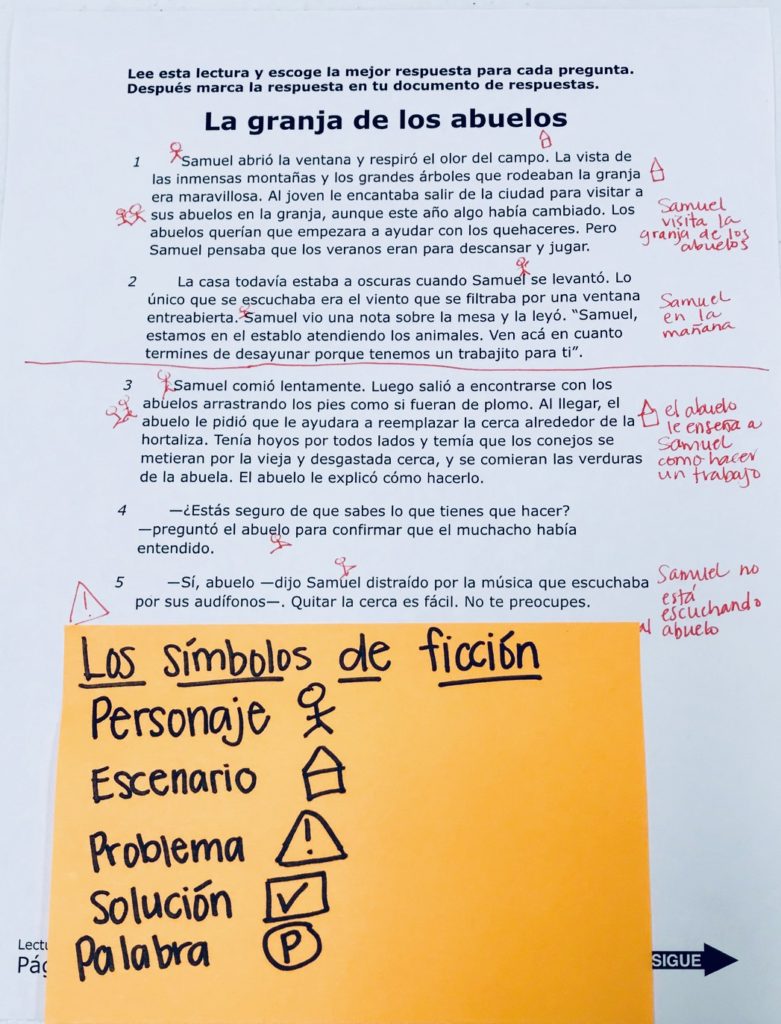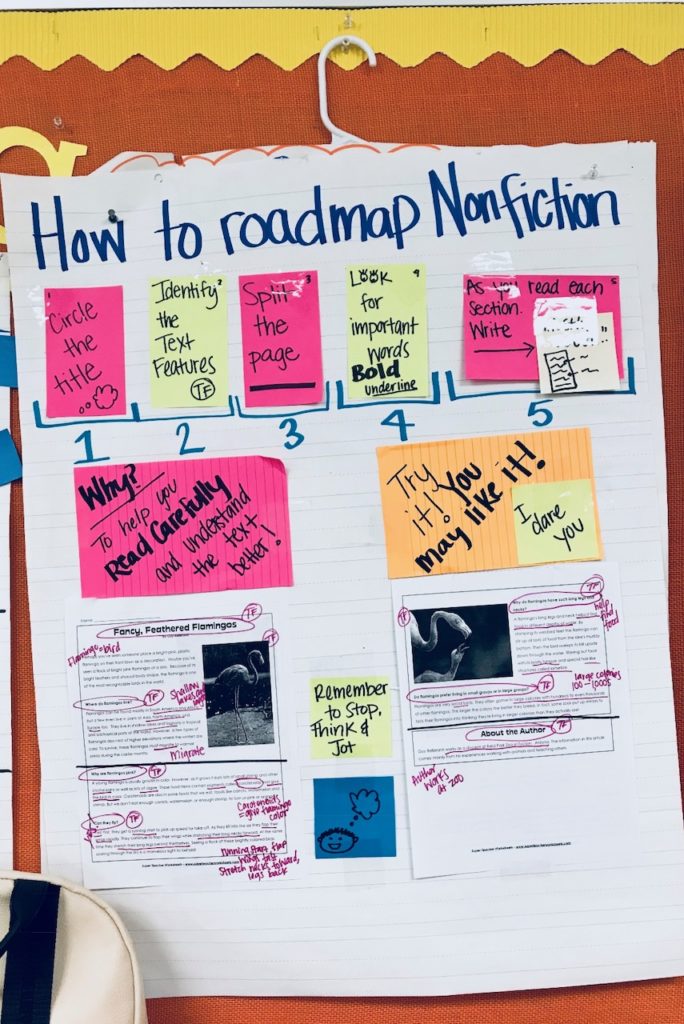It’s time to talk about the importance of teaching students how to read selections (also known as passages). You’re probably thinking, “Oh great, another testing strategy,” and to that I respond with, “not necessarily.” Yes, roadmapping can be considered a testing strategy, but I’d like to think of it as something more.
The act of roadmapping means you’re reading a selection in a very specific and strategic manner. So, why is it important for our students to learn this? Well, for many students, reading long, often boring, selections can be overwhelming. Allowing them to roadmap as they read means they get to stop and ask themselves, “What’s happening in this part of the story?” or “What is the author trying to teach me in this section?” Plus, they get an opportunity to jot down their thinking.
Each genre of reading requires a different roadmap. For example, in literary (or narrative) nonfiction, students are actively looking for the theme of the selection, which is something that’s not present in an informational text. Likewise, when handling an informational text, students are constantly looking for the main/central idea and supporting details but not so much when they’re reading fiction work.
As you’re introducing the concept of roadmapping, you’ll want to come up with special symbols to facilitate the process. For example, each time a character’s name is mentioned in a story, have them draw a stick figure next to the name. Might I also suggest you enlist the help of your students to come up with these symbols. The pictures below give you an idea of what I mean by symbols.


Next, you’ll want to model for them what it means to mark up a selection. Tip: use the projector to ensure everyone follows along. A marked up reading selection can look something like this.

If you notice in the picture above, the expectation for roadmapping is to highlight important parts of the text, such as text features (CT = características del texto) and important words (P = palabra importante). Teach your students to write off to the side what each section/paragraph is mostly about, and “cut” the page in half to remind themselves to stop, think and jot about what they just read.
Below is another example of how you can roadmap for fiction. In this example you’re using symbols to identify the characters (stick figure), setting (house), and a potential problem as the story progresses. Similar to nonfiction, the page is still “cut” in half and off to the side there’s a quick blurb about what that paragraph is about.

Once you’ve modeled for them what it means to roadmap, you’re ready to make that into an anchor chart to display on your walls. Here’s an example of what it looks like on an anchor chart.

It’s important to remember one final thing. Only you, the teacher, can decide how far you’d like to take the concept of roadmapping with your students. Are they capable of doing something like this? Will it be meaningful to them? More importantly, will it improve their reading comprehension? You want to create a healthy balance between reading with a purpose and monotonous test preparation.
Do you think your students would enjoy this if it was introduced to them? Or is this something you already do? How’s it going in your classroom? Comment below.
Thank you!
I like the idea of the roadmap anchor. This will make it easier for the kids to understand. I also have them look for the 5 w’s. Would that be too much to add to the roadmap?
Hi! I think the 5 w’s is a good idea, but it really just depends on your students. If you feel that they’re capable of handing it, then I would have them do that. The main thing is to ensure they’re roadmapping as they read versus going back to do it. I like to roadmap in an organic fashion. It needs to feel natural versus forced. Studying their tests would be a great place for you to start and see if it’s effective. I love seeing their thinking on assessments! Good luck and let me know how it goes. 🙂